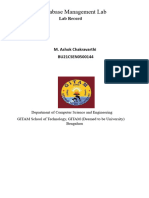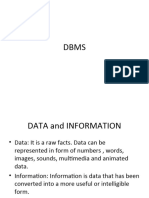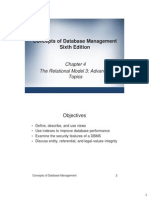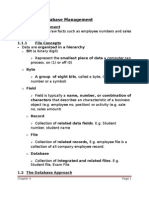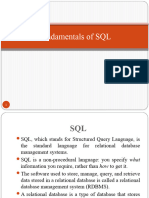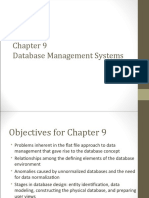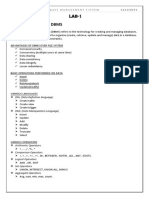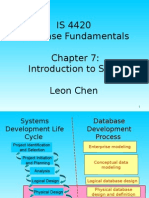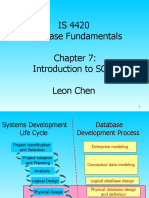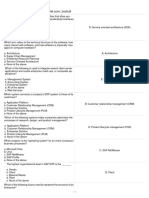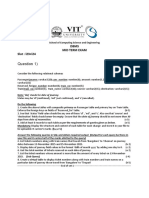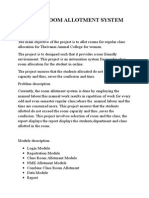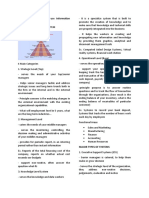0% found this document useful (0 votes)
223 views34 pagesConcepts of Database Management, 4 Edition, Pratt & Adamski
The document discusses the relational model and Query-by-Example (QBE) for querying relational databases. It describes how QBE provides a visual way to write queries and gives examples of simple queries, queries using criteria, computed fields, joins, sorting, and updates. It also introduces relational algebra operations like selection, projection, join, union, intersection and division to theoretically manipulate relational databases.
Uploaded by
rockieCopyright
© © All Rights Reserved
We take content rights seriously. If you suspect this is your content, claim it here.
Available Formats
Download as PPT, PDF, TXT or read online on Scribd
0% found this document useful (0 votes)
223 views34 pagesConcepts of Database Management, 4 Edition, Pratt & Adamski
The document discusses the relational model and Query-by-Example (QBE) for querying relational databases. It describes how QBE provides a visual way to write queries and gives examples of simple queries, queries using criteria, computed fields, joins, sorting, and updates. It also introduces relational algebra operations like selection, projection, join, union, intersection and division to theoretically manipulate relational databases.
Uploaded by
rockieCopyright
© © All Rights Reserved
We take content rights seriously. If you suspect this is your content, claim it here.
Available Formats
Download as PPT, PDF, TXT or read online on Scribd
/ 34




